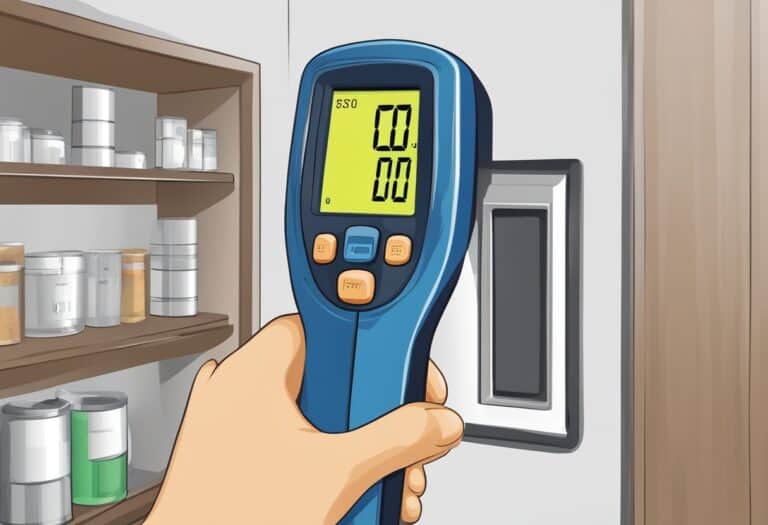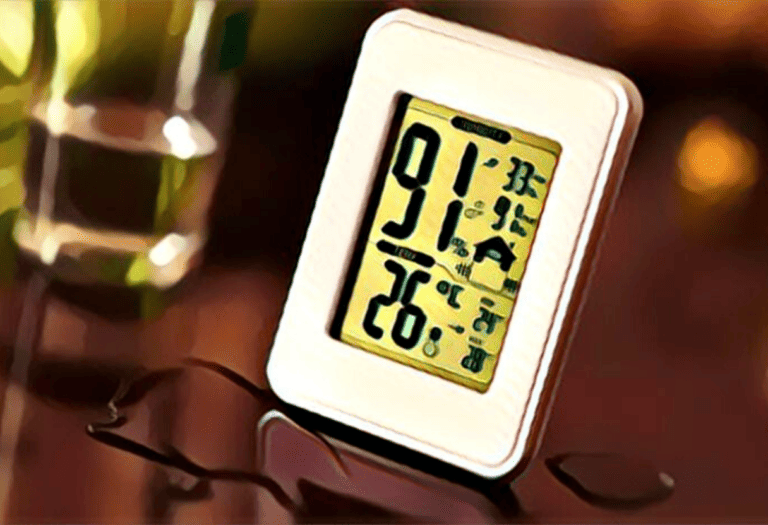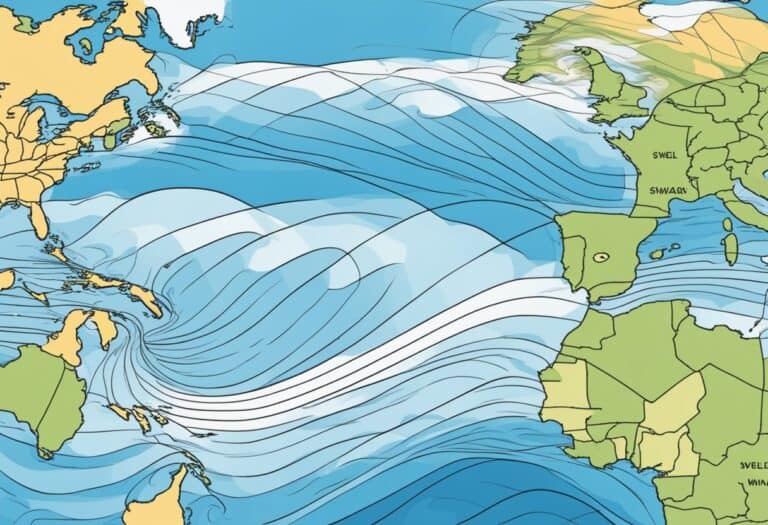A sun dog, also known as a parhelion, is a captivating atmospheric phenomenon that manifests as bright spots on either side of the sun.
These luminous patches grace the sky with a halo of light and color, akin to personal rainbows flanking the sun. They occur when sunlight refracts through ice crystals suspended in the atmosphere, typically in cirrus clouds at high altitudes. The name ‘sun dog’ is derived from their loyal presence at the sun’s side, much like canines often accompany their owners.
These optical illusions are not just random quirks of nature; they’re governed by the precise orientation of ice crystals which act as prisms, bending the light just so.
When the sun is low on the horizon, generally at sunrise or sunset, sun dogs are most likely to appear. The ice crystals responsible for this effect are hexagonal plates or columns, and their alignment in the air will determine the intensity and angle of the resulting sun dogs.
Sun dogs, bright spots near the sun, are formed by ice crystals refracting sunlight. Best seen at sunrise/sunset with cirrus clouds. Colors resemble rainbows but less vibrant. Historically viewed as omens, now explained by science. Enjoy the winter spectacle!
Scientific Explanation
Sun dogs are a captivating atmospheric optical phenomenon that involves the interaction of sunlight with ice crystals in the Earth’s atmosphere. When you observe sun dogs, you’re witnessing the intricate interplay of light, weather, and the laws of optics.
Formation of Sun Dogs
Sun dogs, also known as parhelia, form when sunlight passes through hexagonal ice crystals suspended in the atmosphere, typically found in cirrus clouds at high altitudes. The hexagonal shape of the ice crystals act like prisms, bending or refracting the sunlight. This refraction occurs at a minimum angle of 22 degrees. As a result, you can see two bright spots on either side of the sun when the atmospheric conditions are right.
Optical Characteristics
The colors you see in sun dogs are due to the refraction of sunlight, similar to a rainbow, but the colors often appear less vibrant. Typically, the region closest to the sun will appear red, with a gradient of colors, including yellow, green, and a hint of blue, moving outward. Unlike rainbows, which are circular, sun dogs appear as two separate brightly colored patches. They can be part of a larger halo phenomenon, often accompanying a 22° halo, which is a separate circle of light also formed by ice crystal refraction. Sun dogs are best seen when the sun is near the horizon, either during sunrise or sunset, where they contribute to the beauty of the colorful sky.
Observing Sun Dogs
When you look up at the sky, sun dogs are a fascinating atmospheric spectacle you might witness. These bright spots harness the wonder of light physics, appearing alongside the sun under specific meteorological conditions.
Best Time and Conditions for Viewing
To maximize your chances of seeing sun dogs, aim for cold, clear mornings or late afternoons during the winter months. Sun dogs become visible when the sun is low on the horizon, typically near sunrise or sunset. Look for them within a 22° halo around the sun, a ring caused by the refraction of sunlight passing through ice crystals. The ideal conditions involve cirrostratus or cirrus clouds, these high altitude clouds often contain the necessary ice crystals also known as diamond dust which enable the formation of sun dogs. The National Weather Service and your local almanac might provide additional guidance on when these conditions are expected in your area.
Related Atmospheric Phenomena
Sun dogs are part of a larger family of optical phenomena that often accompany them. You might also observe a halo, a large circle of light around the sun or the moon, and even a moon dog at night under similar conditions. Both sun dogs and moon dogs appear due to the same refraction of light, and while a rainbow creates an arc of color in rainy conditions, sun dogs and related phenomena typically predict foul weather. Remember, whether you’re observing these mock suns or searching for the subtle arcs they form with the sun, these events are not just winter miracles—they can happen worldwide under the right conditions.
Historical and Cultural Significance

Sun dogs have captivated your imagination throughout history, marking their presence in mythology and modern culture with striking visuals that often appear as bright spots on either side of the sun.
Mythology and Ancient Interpretations
In ancient times, you might have referred to sun dogs as “mock suns” or “parhelia”. The Greeks interpreted these optical phenomena as a sign from Zeus, the chief deity of Greek mythology. There are historical records indicating that whenever sun dogs appeared, ancient civilizations regarded them as omens, sometimes of good fortune or as a prelude to war. Images and descriptions from these times often allude to the mock suns gracing the sky, viewed with both reverence and trepidation.
Modern Perception and References
Today, your understanding of sun dogs extends beyond superstition into the realm of atmospheric science. These parhelions are now known to occur due to the refraction of sunlight by ice crystals in the atmosphere. While their mystery may be diminished, sun dogs continue to hold cultural significance. They’re frequently captured in photographs and shared on platforms like Twitter, demonstrating the enduring fascination you have with these celestial events. Recognized sources such as Space.com help explain the origin and the science behind sun dogs, ensuring that the accurate interpretation of these ethereal phenomena is accessible to you.
Frequently Asked Questions
Sun dogs are intriguing atmospheric phenomena that spark curiosity. You might have seen these bright spots flanking the sun and wondered about their nature and implications.
Why are atmospheric phenomena like sun dogs formed?
Sun dogs, also known as parhelia, form when sunlight refracts through ice crystals in the atmosphere. These ice crystals act like prisms, bending the light and creating bright spots in the sky on either side of the sun.
How does a parhelion differ from a full solar halo?
A parhelion, or sun dog, appears as a bright, colorful spot beside the sun, whereas a full solar halo is a complete 22° circular ring around the sun. The halo is caused by the same refraction of sunlight through ice crystals but in a different orientation.
What are the cultural or spiritual interpretations associated with sun dogs?
Throughout history, sun dogs have inspired various cultural and spiritual interpretations. For example, sun dogs have been linked to the heavenly twins images in mythology, suggesting divine presence or omens.
Can the appearance of sun dogs predict weather changes?
Some weather folklore suggests that sun dogs are harbingers of changing weather, often indicating an approaching front that could bring moisture and thus, rain or snow.
How frequently do sun dogs occur in various parts of the world?
Sun dogs are a global phenomenon but are more common in colder regions where ice crystals in the atmosphere are prevalent. Your likelihood of witnessing sun dogs increases in polar regions and during the colder months.
Are there any superstitions or myths historically linked to the occurrence of sun dogs?
Historically, a variety of superstitions and myths are associated with sun dogs, often seen as portents. For instance, they have sometimes been interpreted as predictors of fortune or doom, varying between cultures.







